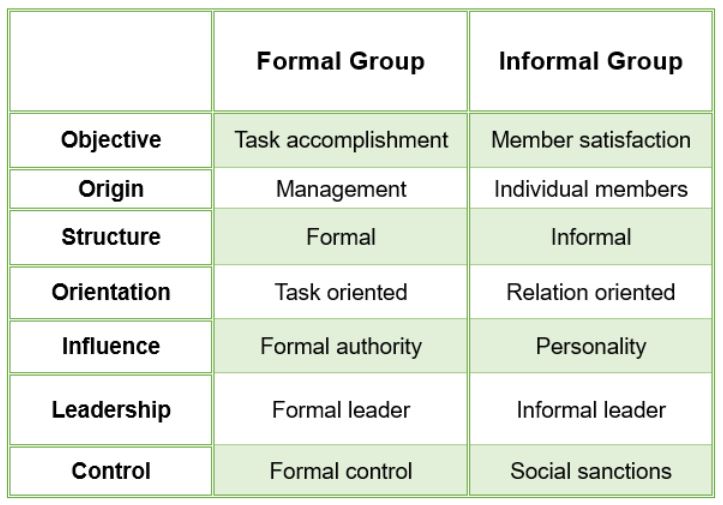Individuals in an organization form various formal and informal groups for the purpose of achieving similar goals or to simply exchange ideas, thoughts and attitude with the group members.
A group is a collection of two or more individuals who interact with each other and are inter-dependent on each other for a common purpose, and hence perceive themselves as a group.
Features of a group
- It consists of two or more people
- It involves interaction and communication between group members
- All members of a group have a collective identity
- All members share similar goals, interests and lifestyle
A group may be defined as two or more individuals, interacting and inter-dependent, who come together to achieve particular objectives.
Group Dynamics is concerned with interactions and forces among group members in a social situation. It refers to the social process by which people interact face to face in small groups. The Three major functions performed by a group in an organization are:
- Socialization of new employees
- Getting the job done – teaching new employees to cope up with the job
- Decision making
Reasons for Group Formation
- Warmth & support
- Power (bargaining strength)
- Security
- Recognition (opportunities for praise)
- Exchange ideas, thoughts, attitude
- Goal accomplishment
- Group activities
Types of Groups
Formal Groups
A group created by formal authority to accomplish a specific task. A formal authority structure governs the behaviour and roles of members. Rules, incentives, regulations & sanctions guide the action of members.
(1) Command Group – It consists of a supervisor and his/her subordinates. Subordinates report to a common superior. These groups form a permanent part of the organisational structure and remains intact even if a member leaves.
(2) Task Group – It consists of employees who work together to complete a particular task on project. Individuals from different divisions and departments come together and work on a particular task. A task group can be often called a committee – task force or project group
- Committee – It is a group of employees whose purpose is to exchange info, advice manager, making decisions.
- Task force – A group created to tackle a certain problem, it is action oriented.
(3) Project group – It consists of individual from many different backgrounds who come together to achieve predetermined objectives within predetermined time, cost & quality limits. It consists of personnel from different areas of expertise who help to attain project goal.
(4) Committees – There are ad-hoc groups formed to examine, analyse and evaluate particular areas of organisational operations. They usually have only advisory authority. There are also standing committees like Board of Directors which exist indefinitely.
Informal Groups
Groups in which membership is voluntary are informal groups. These groups evolve gradually among employees with common interests.
Informal Groups can be categorised into –
(1) Friendship group – People with common interests, social activities, political beliefs, religious values, opinions etc. form an association and extend their interaction to off the job activities.
(2) Interest group – Individuals who may or may not be members of similar task or command group may come together to achieve some mutual benefit. Objectives of such a group are not related to the organisation’s objectives but are specific to each group.
(3) Reference group – It refers to a group of people, a person refers to while taking decisions and uses reference group’s opinion to evaluate himself. It is a group that serves as a reference point for the individuals to evaluate and make decision regarding his/her belief, attitude and behaviour.
Difference between Formal Groups and Informal Groups

good i like this